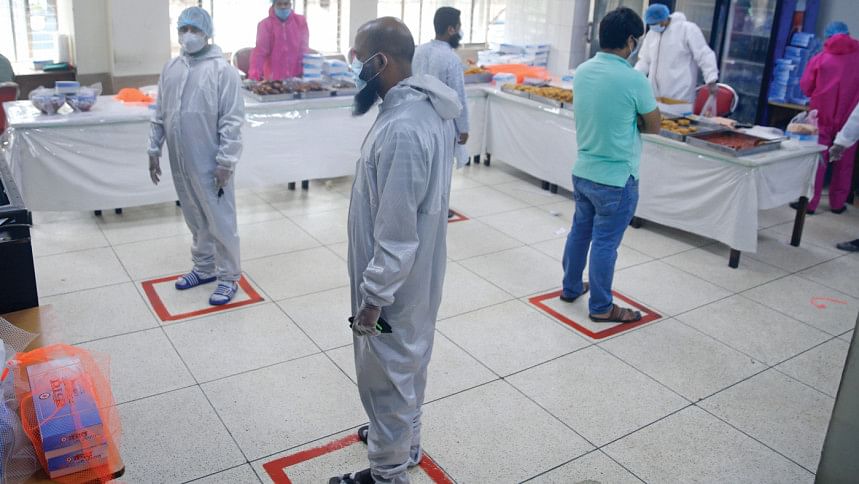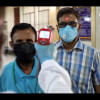Plague prevention costume to personal protective equipment: A brief history

Prior to Covid-19 Personal Protective Equipment (PPE) was not very well known to the general people. It appeared as a fairly unusual outfit to people when the Novel Coronavirus was first detected. Personal Protective Equipment is a protective gear that soldiers, firefighters, chemists, miners, and health workers are widely observed to be using while on duty to safeguard oneself from physical injury or microbial infection. Nowadays we are ceaselessly researching with regards to the use of PPE in health care institutions across the world. Most physicians and nurses wear the full set of PPE (as per WHO standard) during their shifts, and it has turned into their daily wear. The general public who are not in direct contact with the Covid-19 patients are required to wear at least a face mask and a face shield or goggles. However, little we know about the historical evolution that PPE had.
Now, let me take you back to the 'Black death' period or what is commonly known as the 'plague'. During this period, the physicians believed in a miasma theory. According to this rather ancient theory, "corrupted air" penetrates the body and creates a poison making people the victim of plague (Byrne, 2012). During the sixth century, the plague pandemic wreaked havoc on ancient Roman city Constantinople. In addition to sixth century, the plagues of fourteenth and nineteenth century have been recorded as the greatest world pandemics. Around 330 million people perished (suffered harrowing deaths) as a result of the plague pandemics. To save oneself from the terrifying claws of plague in 1619, a 'plague preventive costume' was made by a French physician named Charles Delorme.
The plague preventive costume consisted of a long overcoat that covered the body from the neck to the ankle. Also, hand gloves, boots, and a hat were made of waxed leather to prevent the outside air from entering the body (Paranque, 2020). The costume also consisted of a mask that covered the entire head and had a half-feet-long bird's beak to cover the nose and the mouth. It was loaded with 55 different herbal fragrances so that before the polluted air entered the lungs, it could be purified from contact with the protective herbs. (Blakemore, 2020).
It is believed that Charles Delorme who designed the plague prevention costume was indeed the pioneer of PPE in medical science. A modified version of this costume was spotted during the Marseille Plague (named after a city in Western Europe where the last major outbreak took place) (Paranque, 2020). The long nose and the hat were not included as a part of the costume that was worn by doctors in France and Italy at that point of time. However, whether the costume played a role in preventing plague outbreaks or not is a different debate altogether. Nevertheless, it is interesting that as the century progressed, the costume was gradually adapted and the perception of it shifted from fear to an object of necessity.
In 1899, a French physician who researched on tuberculosis germ invented a face mask made of six layers of gauze so that people could protect themselves from the germ. Many people today believe it to be the first surgical mask. During the Manchurian plague in China in 1910-11, Wu Liande also created a mask that had cotton inserted between two layers of gauze, which was widely accepted by doctors and became known as "Wu's mask" (Global Times, 2020). When the Spanish flu spread out in 1918, general people also wore masks. During the Great Smog of London, a modified version of the Wu's Mask was also seen to be used. During First World War, gas masks were invented to shield the soldiers from the effects of chlorine gas. In the pictures, we can see how gowns, masks, and gloves have changed dramatically over the twentieth century.
The use of PPE gradually rose in chemical and biological laboratories. With the advancement of medical science, the PPE has been adapted to meets our needs and preferences. Recently, medical science has invented better looking, more comfortable and disposable PPE which are now widely adorned by doctors treating Covid-19 patients. With the widespread outbreak of SARS, MERS-CoV, Ebola, and Novel Coronaviruses in just a few short years in the twenty-first century, the design and fabrics of PPE have changed quite innovatively from the very outfit designed by Delorme. Thanks to new scientific breakthroughs, our world definitely changes for the better.
The author is a Senior Research Assistant, Centre of Excellence for Science of Implementation Science and Scale-Up at BRAC James P Grant School of Public Health, BRAC University.
References:
Byrne, P.J. (2012). Encyclopedia of the Black Death. ABC-CLIO, LLC.
Blakemore, E. (2020, March 13). Why plague doctors wore those strange beaked masks. National
Geographic.
https://www.nationalgeographic.com/history/article/plague-doctors-beaked-masks-coronavirus?loggedin=true
Paranque, E. (2020, May 20). Charles Delorme: French physician and inventor of the 'plague
prevention costume'. Art UK.
https://artuk.org/discover/stories/charles-delorme-french-physician-and-inventor-of-the-plague-prevention-costume
The evolution of face masks. (2020, February 12). Global Times, Art, Life.
https://www.globaltimes.cn/content/1179358.shtml

 For all latest news, follow The Daily Star's Google News channel.
For all latest news, follow The Daily Star's Google News channel. 








Comments